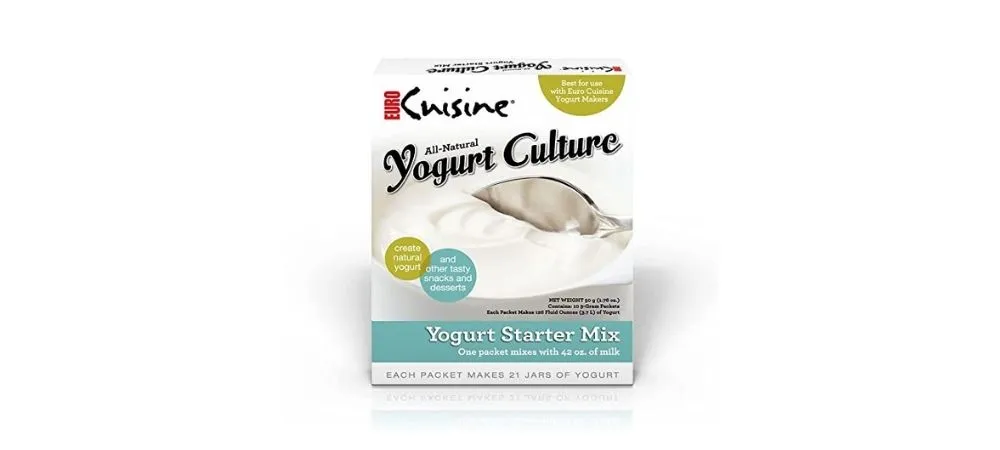Dairy foods are a rich source of protein, calcium, vitamin D, and other nutrients in the USA diet. Fortification of dairy products in the USA is voluntary. But in Europe, dairy products are routinely supplemented with Vitamin D. It ensures that dietary intakes meet the population reference intake (RNI) for this nutrient. The 2010 Agricultural act defined ‘milk’ as follows:
“The term “milk” means the lacteal secretion. It is practically free from colostrum. It is obtained by the complete milking of one or more healthy cows”. It includes full-fat (whole), low-fat (partly skimmed), fat-free (skimmed), and cultured varieties. In the USA, milk is highly processed. Some common varieties include fluid milk that has been pasteurized or ultra-pasteurized. Then, they are packaged in aseptic containers. Long-life milk, organic milk, and lactose-reduced milk are some of the variations.
Related Posts:
- How much Yogurt is Too Much?
- How much Fiber is in Yogurt?
- Is it Healthy to eat Flavoured Yogurt Daily for Breakfast?
- What are the differences in Nutrition between Yogurt and Milk?
- What are the health benefits of Yogurt?
- How many Calories in a Yogurt Parfait?
- How many Carbs in Frozen Yogurt?
- How many Ounces of Yogurt in Cup?
What does the study suggest?
Research has shown that full-fat dairy products can be a source of saturated fatty acids which raises blood LDL cholesterol. However, to date, the effect of dairy fat on cardiovascular disease risk factors has not been clearly defined. As a result, some health professionals advise that consumers should limit their intake of high-fat dairy products. They recommend = for low-fat varieties instead. The overall aim of this review is to examine the evidence from randomized controlled trials (RCTs). It helps in examining the effect of dairy fat on blood total cholesterol, LDL-cholesterol and HDL cholesterol, triglycerides, and plasma glucose concentrations.
What is healthier low-fat dairy or full-fat dairy?

In a recent meta-analysis that examined randomized controlled trials, results showed that consumption of dairy foods as part of a healthy dietary pattern increased HDL cholesterol and reduced LDL cholesterol. Participants who ate low-fat dairy products had a decrease in total blood cholesterol concentration but not an increase in the risk of developing cardiovascular or metabolic diseases.
In addition, those who ate full-fat dairy products had an increase in total blood cholesterol but not an increased risk of developing cardiovascular or metabolic diseases. Therefore, the evidence is clear that consuming low-fat dairy may be healthier than full-fat varieties which could potentially increase LDL levels and provide more benefit for cardiovascular health.
A large number of observational studies have examined associations between intake of dairy products and risk of cardiovascular diseases (CVDs) but results are inconsistent. Some studies found no association between dairy consumption, especially low-fat dairy, and risk of incidence or mortality for coronary heart disease (CHD), stroke, or CVD in general.
However, other studies reported that higher intakes of whole milk were associated with a 38% greater risk of CHD. It was also reported that high intakes of low-fat dairy products were associated with a 52% lower risk of CHD. Therefore, observational studies are limited by poor dietary assessment methods and reverse causality, where the outcome (i.e., cardiovascular disease) may affect reports on intake of dairy food.
What is the benefit of consuming low-fat or non fat dairy milk?

The results of the intervention studies suggest that low-fat dairy could be an effective tool. When it is used as part of a healthy diet, to lower LDL cholesterol, the results are impressive. However, further research is required to determine the effect of dairy fat on CVD risk factors over a long period (e.g., greater than 6 weeks) and in diverse population groups.
Related Posts:
- Is Yogurt good for high blood pressure?
- Is it ok to have yogurt if one is allergic to cow’s milk?
- Is Greek Yogurt bad for cholestrol?
- Is yogurt good for diarrhea?
- Does yogurt give me heartburn?
- Can eating Yogurt prevent diabetes?
Should we avoid consuming high-fat dairy products?
Based on available evidence, low-fat or full-fat dairy may help reduce the risk of CVD and improve blood lipid profiles. In addition, including dairy products likely to have numerous health benefits. It helps to reduce body fatness, promoting bone health, and preventing type 2 diabetes.
Why fat-free milk is bad for you?
The fat-free milk campaign has been a disaster. Fat is flavor and promotes “satiety,” meaning you feel full faster, eat less and spend more time losing weight.
Fat-free milk tastes like water. So people add sugar to it instead of the cream they usually put in their coffee. It may actually make them fatter because sugar is as “fat-promoting” as fat. Fat-free milk has less protein. Therefore, it is more difficult for the body to process — which makes us hungrier and wastes calories we do eat.
Saturated fat does not cause heart disease — sugar and refined carbohydrates do. As with most dietary advice, moderation is best: Don’t drink your calories.
Conclusion
Low-fat dairy products are not good for your health. They are high in carbohydrates which can make you gain weight, increase blood sugar levels and contribute to diabetes.
The consumption of whole milk was associated with a significantly lower risk of metabolic syndrome. No significant association was seen between consumption of skim or low-fat milk and risk of metabolic syndrome. Therefore, the fat content in dairy products is not related to an increased risk of metabolic syndrome. It is not a condition associated with obesity and disruption in lipid metabolism.











